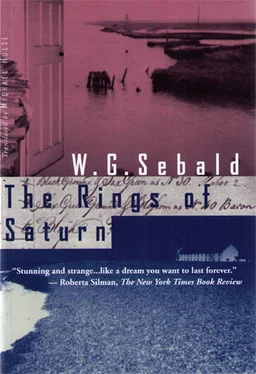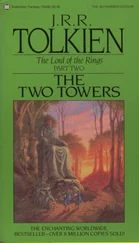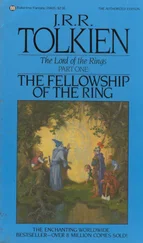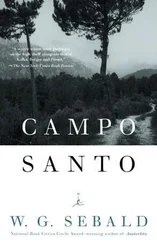Firm in the principles and constant
in the practice of religion
Her life displayed the peace of virtue
Her modest sense, Her unobtrusive elegance
of mind and manners,
Her sincerity and benevolence of heart
Secured esteem, conciliated affection,
Inspired confidence and diffused happiness.
Ditchingham churchyard was the very last stop on my walk through the county of Suffolk. The afternoon was already drawing to a close, and so I decided to return to the main road and continue a short way in the direction of Norwich, to the Mermaid in Hedenham, where the bar would be opening soon. I would be able to phone home from there to be picked up. The route I had to take led me past Ditchingham Hall, a house built around 1700 in beautiful mauve-coloured brick, the windows of which are fitted with dark green shutters. It was situated well off the main road above a serpentine lake, and encompassed on all sides by extensive parkland. Later, while I was waiting for Clara in the Mermaid, it occurred to me that Ditchingham Park must have been laid out around the time when Chateaubriand was in Suffolk. Estates of this kind, which enabled the ruling elite to imagine themselves surrounded by boundless lands where nothing offended the eye, did not become fashionable until the second half of the eighteenth century. Planning and executing the work necessary for an embarkment could take two or three decades. In order to complete such a project it was usually necessary to buy parcels of land and add them to the existing estate, and roads, tracks, individual farmsteads, sometimes even entire villages had to be moved, as the object was to enjoy an uninterrupted view from the house over a natural expanse innocent of any human presence. It was for the same reason that fences were replaced with broad, grass-covered ha-has, which were dug out at a cost of many thousands of working hours. Naturally, such an undertaking, with its considerable impact not only on the landscape, but also on the life of the local communities, could not always be accomplished without controversy. At the period in question, an ancestor of Earl Ferrers, the present owner of Ditchingham Hall, having become embroiled in a confrontation with one of his estate managers, dispatched him with his gun, for which deed he was in due course sentenced to death by his peers in the House of Lords, and hanged publicly in London by a silken rope. — The least costly aspect of laying out a landscaped park was planting trees as specimens or in small groups, even if it was not seldom preceded by the felling of tracts of woodland and the burning-off of unsightly thickets and scrub that did not comply with the overall concept. Nowadays, given that only a third of the trees planted at the time are still standing in most parks, and that more are dying each year of old age and many other causes, we will soon be able to envisage once more the Torricelli-like emptiness in which the great country seats stood in the late eighteenth century. Chateaubriand also later made a modest attempt to realize the ideal of nature projected into that emptiness. When he returned in 1807 from his long journey to Constantinople and Jerusalem, he bought a summer house that lay hidden among wooded hills in the Vallée aux Loups, not far from the town of Aulnay. It is there that he begins to write his memoirs, on the first pages of which he speaks of the trees he has planted and tended with his own hands. Now, he says, they are still so small that I provide them with shade whenever I step between them and the sun. But one day, when they have grown, they will give shade to me, and look after me in my old age much as I looked after them in their youth. I feel a bond unites me with these trees; I write sonnets, elegies and odes to them; they are like children, I know them all by name, and my only desire is that I should end my days amongst them. — This picture was taken at
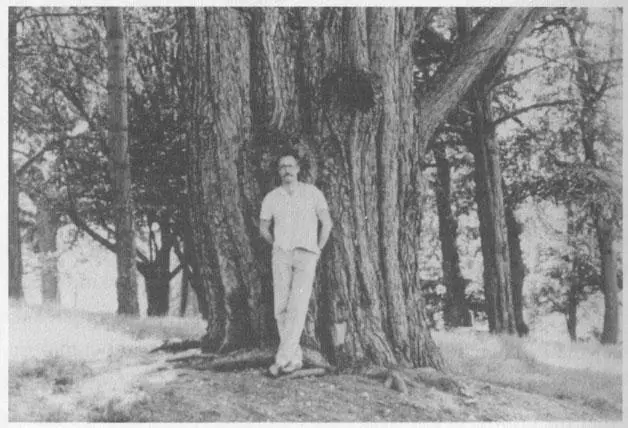
Ditchingham about ten years ago, on a Saturday afternoon when the manor house was open to the public in aid of charity. The Lebanese cedar which I am leaning against, unaware still of the woeful events that were to come, is one of the trees that were planted when the park was laid out, and most of which, as I have said, have already disappeared. Since the mid-Seventies there has been an ever more rapid decline in the numbers of trees, with heavy losses, above all amongst the species most common in England. Indeed, one tree has become well nigh extinct: Dutch elm disease spread from the south coast into Norfolk around 1975, and within the space of just two or three summers there were no elms left alive in the vicinity. The six elm trees which had shaded the pond in our garden withered away in June 1978, just a few weeks after they unfolded their marvellous light green foliage for the last time. The virus spread through the root systems of entire avenues with unbelievable speed, causing capillaries to tighten and leading to the trees' dying of thirst. Even solitary trees were located with infallible accuracy by the airborne beetles which spread the disease. One of the most perfect trees I have ever seen was an almost two hundred-year-old elm that stood on its own in a field not far from our house. About one hundred feet tall, it filled an immense space. I recall that, after most of the elms in the area had succumbed, its countless, somewhat asymmetrical, finely serrated leaves would sway in the breeze as if the scourge which had obliterated its entire kind would pass it by without a trace; and I also recall that a bare fortnight later all these apparently invincible leaves were brown and curled up, and dust before the autumn came. It was then also that I noticed that the crowns of ash trees were becoming sparse, and the foliage of oaks was thinning and displaying strange mutations. At the same time, the trees themselves were producing leaves from hard old wood, and by mid-summer they were dropping masses of rock-hard, deformed acorns that were covered with a sticky substance. The beech trees, which until then had remained in good shape, were affected by several long droughts. The leaves were only half their usual size, and almost all the beechnuts were empty. One after the other, the poplars on the meadow died. Some of the dead
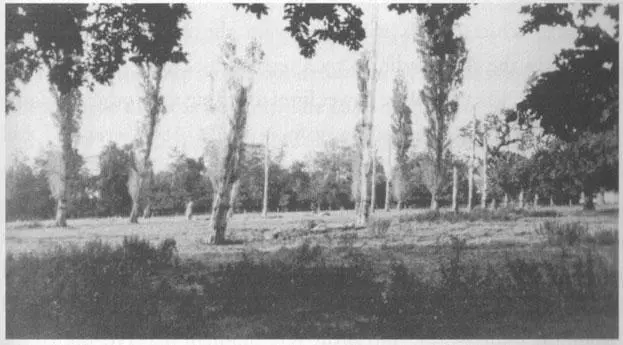
trunks are still standing, while others lie broken and bleached in the grass. Finally, in the autumn of 1987, a hurricane such as no one had ever experienced before passed over the land. According to official estimates over fourteen million mature hard-leaf trees fell victim to it, not to mention the damage to conifer plantations and bushes. That was on the night of the 16th of October. Without warning, the storm came up out of the Bay of Biscay, moved along the French west coast, crossed the English Channel and swept over the south-east part of the island out into the North Sea. I woke at about three in the morning, less as a result of the thunderous roar than because of the curious warmth and the increasing air pressure in my bedroom. In contrast with other equinoctial gales which I have experienced here, this one came not in driving gusts but with an unrelenting and, it seemed, ever more powerful force. I stood at the window and looked through the glass, which was strained almost to breaking point, down towards the end of the garden, where the crowns of the large trees in the neighbouring bishop's park were bent and streaming like aquatic plants in a deep current. White clouds raced across in the darkness, and again and again the sky was lit up by a terrible flickering which, I later discovered, was caused by power lines touching each other. At some point I must have turned away for a while. At all events, I still remember that I did not believe my eyes when I looked out again and saw that where the currents of air had shortly beforehand been pouring through the black mass of trees, there was now just the paleness of the empty horizon. It seemed as if someone had pulled a curtain to one side to reveal a formless scene that bordered upon the underworld. And at the very moment that I registered the unaccustomed brightness of the night over the park, I knew that everything down there had been destroyed. And yet I hoped that the ghastly emptiness could be explained by some other means, for in the mounting din of the storm I had heard none of the crashing sounds that go with the felling of timber. It was not until later that I realized that the trees, held to the last by their root systems, toppled only gradually, and because they were forced down so slowly their crowns, which were entangled with each other, did not shatter but remained virtually undamaged. In this way, entire tracts of woodland were pressed down flat as if they had been cornfields. In the first light of dawn, when the storm had begun to abate, I ventured out into the garden. For a long time I stood choked with emotion amidst the devastation. It was like being in a kind of wind tunnel, so strong was the suction created by the onrushing air, which was far too warm for the time of year. The ancient trees on either side of the path leading along the edge of the park were all lying on the ground as if in a swoon, and beneath the huge oaks, ash and plane trees, beeches and limes lay the torn and mangled shrubs that had grown in their shade, thujas and yews, hazel and laurel bushes, holly and rhododendrons. With pulsating radiance the sun rose over the horizon. The gusts continued for a while, and then it was suddenly quiet. Nothing moved, apart from the birds which had lived in the bushes and trees and which were now flitting about amongst the branches that had remained green well into the autumn that year. I do not know how I got through the first day after the storm, but do recall that during the night, doubting what I had seen with my own eyes, I walked once more through the park. As there were power cuts throughout the whole region, everything was in deep darkness. There was no glare from streetlights or houses to dull the sky. But the stars had come out, in a display so resplendent as I had seen only over the Alps when I was a child, or over the desert in my dreams. From the extreme north right down to the south where the view had before been blocked by trees, the sparkling constellations were spread out, the Plough, the tail of Draco, the triangle of Taurus, the Pleiades, Pegasus, the Swan and the Dolphin. Unchanged and, as it seemed to me, more magnificent than ever before, they revolved above me. The silence of that brilliant night after the storm was followed by the revving of chainsaws during the winter months. It took four or five labourers until March to cut up the branches, burn the rubbish, and haul away the trunks. An excavator dug large holes in which stumps and roots, some of them the size of a small house, were buried. Now, in the truest sense of the word, everything was turned upside down. The forest floor, which in the spring of last year had still been carpeted with snowdrops, violets and wood anemones, ferns and cushions of moss, was now covered by a layer of barren clay. All that grew in the hard-baked earth were tufts of swamp grass, the seeds of which had laid in the depths for goodness knew how long. The rays of the sun, with nothing left to impede them, destroyed all the shade-loving plants so that it seemed as if we were living on the edge of an infertile plain. Where a short while ago the dawn chorus had at times reached such a pitch that we had to close the bedroom windows, where larks had risen on the morning air above the fields and where, in the evenings, we occasionally even heard a nightingale in the thicket, its pure and penetrating song punctuated by theatrical silences, there was now not a living sound.
Читать дальше
